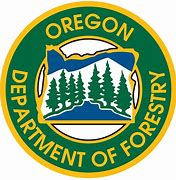Tillamook State Forest, Ore.–More than 6,100 acres of harvested timber areas in Oregon’s state forests are getting nearly 2.3 million seedlings planted this year. Planting is underway or soon to be started in the Tillamook, Clatsop, and Santiam, while planting on the Sun Pass and Gilchrist State Forests will start in May.
“Depending on weather, soil conditions, and planting crew availability each state forest typically gets their planting done in six-to-eight weeks,” said John Walter, Oregon Department of Forestry’s (ODF) State Forests Silviculturist.
A long planning timeframe
Although the planting window is short, the planning and coordination to get those trees in the ground by ODF’s experts is much longer.
“We are looking at our seedling needs about two to three years out,” said Walter. “We come up with the number of seedlings needed and then contract with several nurseries to get them grown at the time we need them.”
It sounds simple enough; however, the way the timber sale contracts are set up makes coming up with an accurate number tricky.
“Winning bidders have two to three years to harvest that sale,” said Walter. “That means we may need to replant in that area after year one, two, or three. So how do we come up with the number of seedlings each year? We get with each ODF district folks and make a best guess based on past performance of the winning bidder, operator availability, and market conditions.”
One time rule changes challenging
Another issue this past year, especially for the Tillamook State Forest, was the implementation of the Private Forest Accord and the resulting changes to the Forest Practices Act (FPA). Some private landowners decided to harvest under the old rules. This created an increase in the demand for the limited number of timber operators.
“Nearly all the operators were working on private forestland last year,” said Nick Stumpf, Unit Manager for ODF’s Tillamook District. “In a normal year we would have 10-12 harvest operations, last year we had one.”
Private timber operators are the ones who run the harvest equipment and are typically contracted by the winning bidders of a state forest timber sale.
“For state forests our contracts already met or exceeded the requirements of the FPA changes in many areas so there was no rush to harvest on state sales,” said Stumpf. “The operators were focused on getting timber out of private lands before the rule changes. This one-time shift changed the prediction of how many seedlings we would need to plant in our district.”
Costs increase, revenue sharing static
Not only are they taking an educated guess at the number of seedlings needed, but they are also having to project the costs of the seedling itself but the labor and contract costs to plant them.
“Those combined costs used to be fairly consistent,” said Walter. “However, over the past five years or so those combine costs have climbed from around 50 cents a tree to more than $1 a tree.”
These cost increases are hard for ODF to manage since revenue from state forest timber sales is split, with the host counties getting approximately two-thirds while one-third is kept by ODF to manage the forests. However, ODF pays for all costs associated with managing state forestlands, including timber sales, post-harvest replanting, trail and campground maintenance and improvements, and improving wildlife habitat. So, when costs increase, like doubling planting costs, it takes funding away from other important work on state forestlands, as ODF must absorb those increases without being able to access more of the sales revenue.
Unique greatest permanent value management
Another cost and planning challenge when replanting is state forests are managed for a concept called greatest permanent value (GPV). GPV means that the approximately 745,000 acres of forestlands ODF manages across the state needs to provide for economic, environmental, and social benefits to Oregonians.
“GPV impacts how we plan and plant after a timber harvest,” said Zach Rabe, Tillamook District Operations Coordinator. “Most large private landowners plant 100 percent Douglas-fir, because it is typically the most valuable species here in Western Oregon. However, because of our GPV management goals, we plant about 70 percent Doug-fir and 30 percent other species. Our goal is to promote diverse and thus resilient forests to provide environmental benefits. We mimic what was likely the natural conifer mix of the forests to provide those environmental benefits like wildlife habitat. This mix also improves social benefits like clean water and seeing more than one species when you are on a state forest trail or road.”
The mix of tree types means ordering seedlings from nurseries is more complex than a one species order.
“We have to consolidate all the needs for each district and then come up with a list of the species and numbers of seedlings we need,” said Walter. “So again, we are trying to predict our seedling needs nearly three years out, so it is a best guess; however, we want to make sure we have enough seedlings, so we typically have leftover trees.”
Extra seedlings shared
Last year ODF had a lot of seedlings leftover after planting all ODF lands.
“We sold 580,000 seedlings to private and industrial landowners. We donated 20,000 to non-profits, mostly watershed groups, and gave about 60,000 seedlings to tribal governments,” said Walter. “We don’t want to come up short because that impacts future activities; however, we do not want these seedlings to go to waste so we try to make sure they all get used.”
Organizations that buy or receive free seedlings still must pay for the planting costs.
“We are still doing final calculations on how many trees we will plant this year, but like last year we will offer up the extras we do not use,” said Walter.
For more information on Oregon’s State Forests see: Oregon Department of Forestry : State forests : Forest resources : State of Oregon For information on recreational opportunities see: Oregon Department of Forestry : Recreation, education & interpretation : Recreation, education & interpretation : State of Oregon If you are a private small forestland owner and what more information on managing your forest see: Oregon Department of Forestry : Small Forestland Owner Office : Forest resources : State of Oregon









